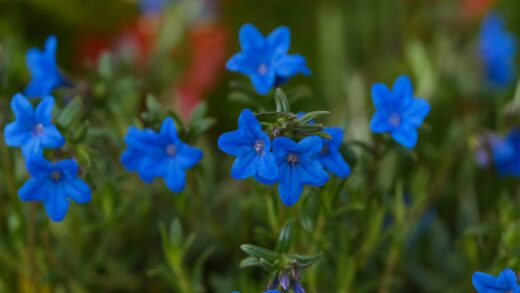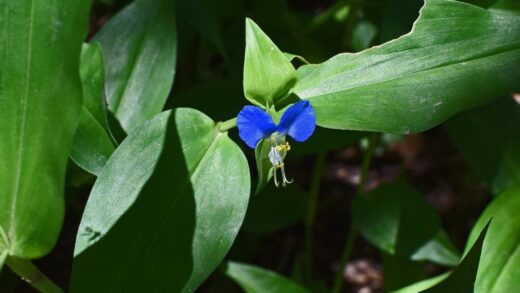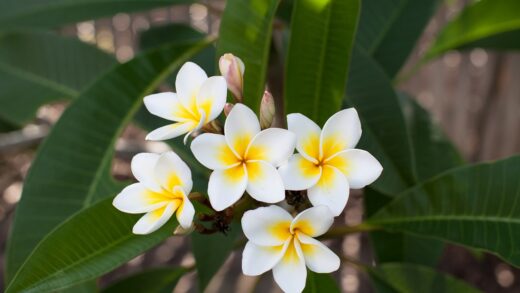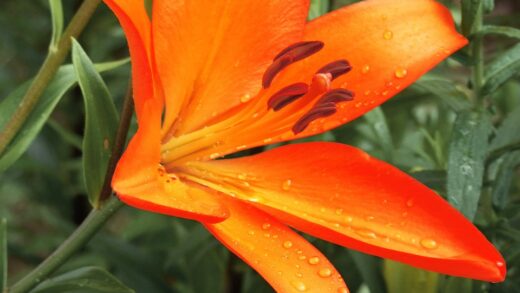Darwin’s barberry is a remarkably resilient and visually stunning evergreen shrub, prized for its vibrant orange-yellow flowers in spring and deep blue berries in autumn. Proper care ensures this plant not only survives but thrives, becoming a focal point in any garden landscape. To achieve this, a holistic approach is necessary, considering everything from its initial placement to its ongoing maintenance throughout the seasons. Understanding its native habitat in the temperate regions of Chile and Argentina provides crucial clues to its needs, highlighting a preference for well-drained soil and moderate conditions. This foundational knowledge allows the gardener to replicate its ideal environment, leading to a healthy, vigorous plant with prolific flowering and fruiting.
The general upkeep of this shrub is relatively straightforward, making it an excellent choice for both novice and experienced gardeners. Its evergreen nature provides year-round interest, with its small, spiny, holly-like leaves offering texture and structure even in the depths of winter. The key to successful cultivation lies in balancing its needs for sunlight, water, and nutrients without excessive intervention. Over-caring for this plant can be just as detrimental as neglect, so a measured and observant approach will yield the best results. Regular monitoring for any signs of stress or disease is paramount for early intervention and maintaining the plant’s robust health.
One of the most appealing aspects of Darwin’s barberry is its adaptability to a variety of garden settings. It can be used as a standalone specimen plant, a dense and impenetrable hedge, or as part of a mixed border to provide color and structure. Its tolerance for different soil types, excluding waterlogged conditions, adds to its versatility. The spiny nature of its foliage also makes it an effective deterrent for unwanted animal visitors, providing a natural and beautiful barrier. This functionality, combined with its aesthetic appeal, makes it a highly valuable addition to garden design.
Ultimately, the long-term health and beauty of Darwin’s barberry depend on a consistent care routine that respects its natural inclinations. This involves providing the right conditions from the outset and then performing regular but minimal maintenance tasks such as pruning, feeding, and appropriate watering. By doing so, you can enjoy the spectacular display of flowers that attract bees and other pollinators in the spring, followed by the ornamental berries that provide food for birds in the autumn. This plant truly offers a dynamic and rewarding experience for the dedicated gardener.
Understanding the soil and site requirements
Choosing the correct location is the most critical first step in ensuring the long-term health of Darwin’s barberry. This shrub performs best in a position that receives full sun to partial shade, with the ideal scenario being morning sun and some protection from the harsh afternoon sun, especially in warmer climates. While it can tolerate a fair amount of sun, excessive heat can lead to stress and leaf scorch. In shadier spots, flowering may be less prolific, so a balance must be struck to achieve the desired ornamental effect. The site should also offer some protection from strong, drying winds which can damage the evergreen foliage.
More articles on this topic
The soil composition plays a vital role in the successful establishment and growth of the plant. Darwin’s barberry thrives in fertile, well-drained soil and is adaptable to a range of soil pH levels, from slightly acidic to slightly alkaline. The single most important factor is drainage; the plant’s roots are susceptible to rot in heavy, waterlogged clay soils. Before planting, it is highly advisable to amend the soil with organic matter such as compost or well-rotted manure. This improves soil structure, enhances drainage, and provides a slow-release source of essential nutrients.
Preparing the planting site thoroughly will pay dividends for years to come. Dig a planting hole that is at least twice as wide and just as deep as the root ball of the plant. This loosening of the surrounding soil encourages the roots to spread outwards rather than remaining confined, leading to a more stable and robust plant. Roughen the sides of the hole to prevent glazing, especially in clay soils, which can create a barrier to root penetration. Creating an environment where the roots can easily establish themselves is fundamental to the plant’s overall vigor.
When situating Darwin’s barberry, consider its mature size, which can reach up to three meters in both height and spread. Allowing adequate space for its development is crucial to avoid overcrowding and the need for excessive pruning later on. This is particularly important when planting it as a hedge, where individual plants should be spaced appropriately to allow them to knit together without competing excessively for resources. Proper spacing ensures good air circulation, which is key to preventing the development of fungal diseases.
Mulching and its benefits
Applying a layer of organic mulch around the base of Darwin’s barberry is a simple yet profoundly effective care practice. Mulching helps to conserve soil moisture by reducing evaporation from the surface, which is particularly beneficial during dry summer months. This creates a more stable root environment and reduces the frequency of watering required. An ideal mulch layer should be approximately five to seven centimeters deep, covering the entire root zone but kept away from direct contact with the main stem to prevent rot. This simple step can significantly improve the plant’s resilience to drought.
More articles on this topic
Beyond moisture retention, mulch serves several other important functions that contribute to the plant’s health. It acts as a natural weed suppressant, preventing opportunistic weeds from competing with the barberry for water and nutrients. As the organic mulch, such as bark chips, leaf mold, or garden compost, gradually breaks down, it enriches the soil with valuable organic matter and nutrients. This process improves soil fertility and structure over time, creating a thriving ecosystem for the plant’s roots and beneficial soil microbes.
The type of mulch used can also influence soil conditions. For instance, using an ericaceous compost or pine bark mulch can help to maintain a slightly acidic soil pH, which is beneficial for many plants, including Darwin’s barberry. The application of mulch also helps to regulate soil temperature, keeping the roots cooler in the summer and insulating them from frost in the winter. This buffering effect reduces stress on the plant, allowing it to devote more energy to growth and flowering rather than merely surviving adverse conditions.
It is best to apply mulch in the late spring, after the soil has warmed up but before the onset of hot, dry summer weather. Before applying, ensure the area around the plant is free of weeds and the soil is moist. Replenish the mulch layer annually or as needed to maintain its depth and effectiveness. This consistent practice is one of the easiest ways to ensure your Darwin’s barberry remains healthy, hydrated, and well-nourished throughout the year.
Monitoring for plant health
Regular observation is a cornerstone of proactive plant care and is essential for maintaining the health of your Darwin’s barberry. Make it a habit to inspect the plant closely every few weeks, paying attention to the color and condition of the leaves, stems, and flowers. Look for any signs of discoloration, such as yellowing leaves (chlorosis), which could indicate a nutrient deficiency, or brown spots, which might signal a fungal infection. Early detection of such issues allows for timely intervention before the problem becomes widespread and more difficult to manage.
During your inspections, check for the presence of common pests. While Darwin’s barberry is relatively pest-resistant, it can occasionally be affected by aphids, particularly on new, soft growth. Also, look for signs of scale insects or spider mites, especially if the plant is under stress. Examining the undersides of leaves and the junctions between stems is crucial, as this is where many pests tend to congregate. If pests are found, they can often be managed with a strong jet of water or by using insecticidal soaps, avoiding harsh chemical pesticides that can harm beneficial insects.
In addition to pests, be vigilant for symptoms of disease. Powdery mildew can sometimes be an issue in humid conditions with poor air circulation, appearing as a white, dusty coating on the leaves. Rust is another fungal disease to watch for, characterized by orange or brown pustules. The best defense against these diseases is prevention, which includes ensuring good air circulation through proper spacing and pruning, and avoiding overhead watering that leaves the foliage wet for extended periods. If an infection does occur, remove and destroy the affected parts of the plant to prevent its spread.
Finally, assess the overall vigor and growth habit of the shrub. Is it producing healthy new growth each season? Is the flowering and fruiting consistent with previous years? Any sudden decline in health or a lack of vitality could be an indicator of an underlying issue, such as root problems, soil compaction, or environmental stress. A healthy plant will have a dense covering of deep green leaves and a robust structure. By being an observant gardener, you can respond to your plant’s needs swiftly and effectively, ensuring it remains a beautiful and trouble-free feature in your garden.
Seasonal care considerations
The care requirements of Darwin’s barberry will naturally shift with the changing seasons, and adapting your routine accordingly is key to its success. In the spring, the focus should be on encouraging new growth and a spectacular floral display. This is the ideal time to apply a balanced, slow-release fertilizer to provide the necessary nutrients for the growth spurt ahead. Light pruning can also be carried out immediately after the flowering period to shape the plant and remove any dead or damaged wood, ensuring energy is directed towards healthy growth.
As summer arrives, the primary concern becomes water management, especially during periods of drought. Although established plants are quite drought-tolerant, young plants and those in containers will require regular watering to keep the soil consistently moist but not saturated. This is also a good time to check and replenish the mulch layer around the base of the plant to help conserve moisture and keep the root zone cool. Continue to monitor for pests and diseases, which can become more prevalent in the warm and sometimes humid summer weather.
Autumn is a time of transition for the plant as it prepares for dormancy. The vibrant spring flowers give way to an attractive display of edible, deep blue berries, which provide a valuable food source for birds and other wildlife. Reduce watering as the weather cools and rainfall becomes more frequent. This is also a good time to perform any necessary cleanup around the plant, removing fallen leaves and debris to reduce the chances of overwintering pests and diseases. Avoid heavy pruning in autumn, as this can encourage new growth that will be vulnerable to frost damage.
Winter care for Darwin’s barberry is generally minimal, as it is a hardy evergreen capable of withstanding cold temperatures. In regions with very severe frosts or heavy snowfall, providing some protection can be beneficial, especially for younger, less established plants. A thick layer of mulch applied in late autumn will help to insulate the root system from freezing temperatures. If heavy snow is expected, you can gently brush it off the branches to prevent them from breaking under the weight. Otherwise, the shrub provides valuable structure and color in the dormant winter garden with little intervention required.
Special care for container-grown plants
Cultivating Darwin’s barberry in a container offers a versatile way to enjoy this shrub on patios, balconies, or in smaller garden spaces. However, container-grown plants have slightly different care requirements compared to those planted in the ground. The most critical factor is the choice of container and potting medium. Select a large pot with ample drainage holes to accommodate the root system’s growth and prevent waterlogging. Use a high-quality, soil-based potting compost, mixed with grit or perlite to further improve drainage and aeration.
Watering is a much more frequent task for container-grown specimens, as the limited volume of soil dries out far more quickly than garden soil. During the growing season, you may need to water the plant every few days, and possibly daily during hot, dry spells. Always check the top few centimeters of compost before watering; if it feels dry to the touch, it’s time to water thoroughly until you see excess draining from the bottom of the pot. In winter, reduce watering significantly, allowing the compost to dry out slightly between applications, but never let it dry out completely.
Nutrient management is also more intensive for potted plants because the nutrients in the potting mix are depleted over time through watering. To keep your Darwin’s barberry healthy, you will need to feed it regularly throughout the growing season, from spring to late summer. A balanced, slow-release granular fertilizer applied at the beginning of the season is a good option, supplemented with a liquid feed every few weeks. Cease feeding in the autumn to allow the plant to prepare for winter dormancy.
Repotting will be necessary every two to three years, or when the plant becomes root-bound and its growth slows. The best time to repot is in the spring, just as new growth begins. Choose a new container that is only slightly larger than the previous one, as moving to a pot that is too large can lead to the soil staying wet for too long. During repotting, you can also prune the roots lightly to encourage new growth and refresh some of the potting compost to replenish nutrients. This regular maintenance will ensure your container-grown barberry remains vigorous and beautiful.
📷 Michael Wolf, CC BY-SA 3.0, via Wikimedia Commons


















